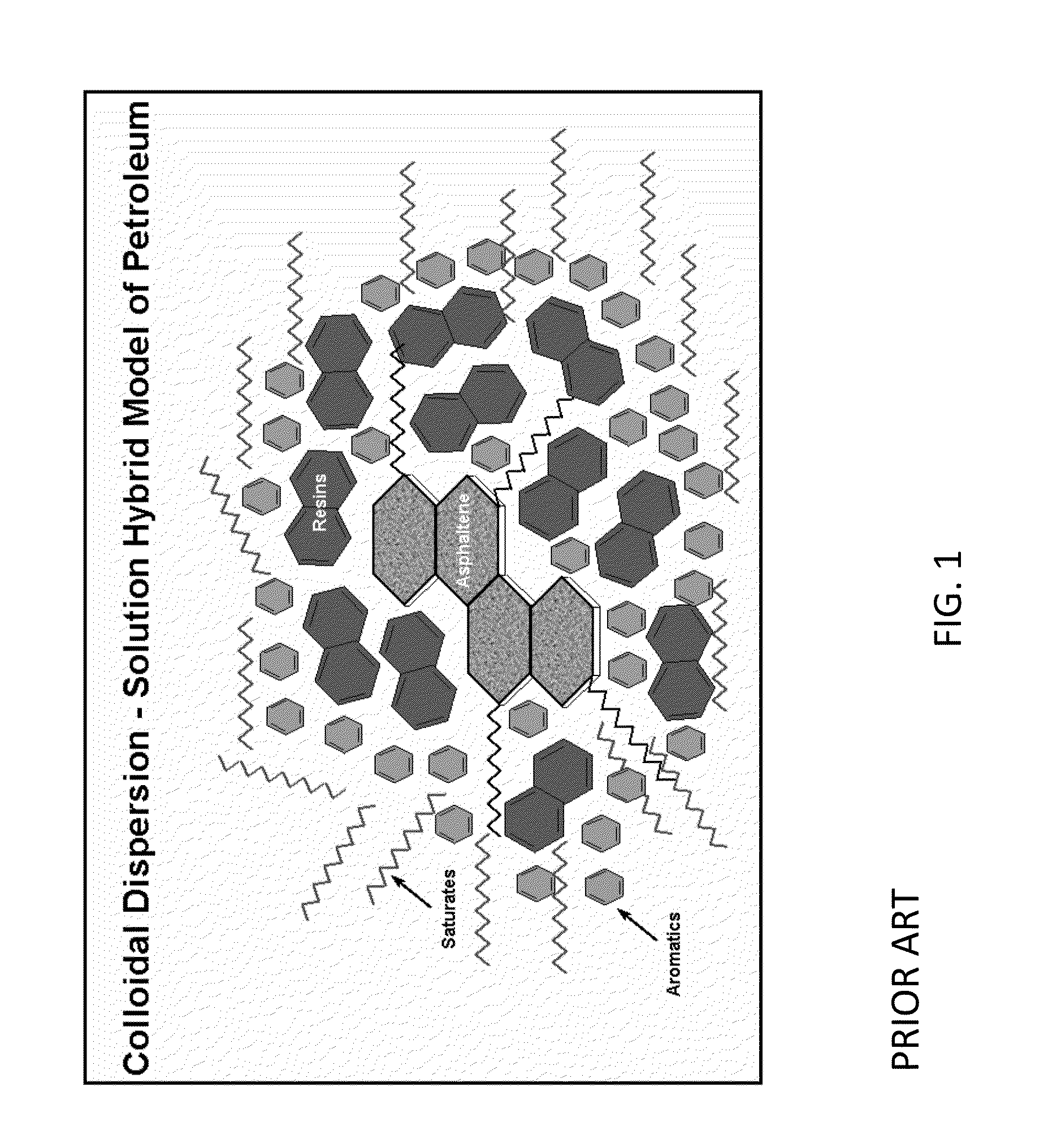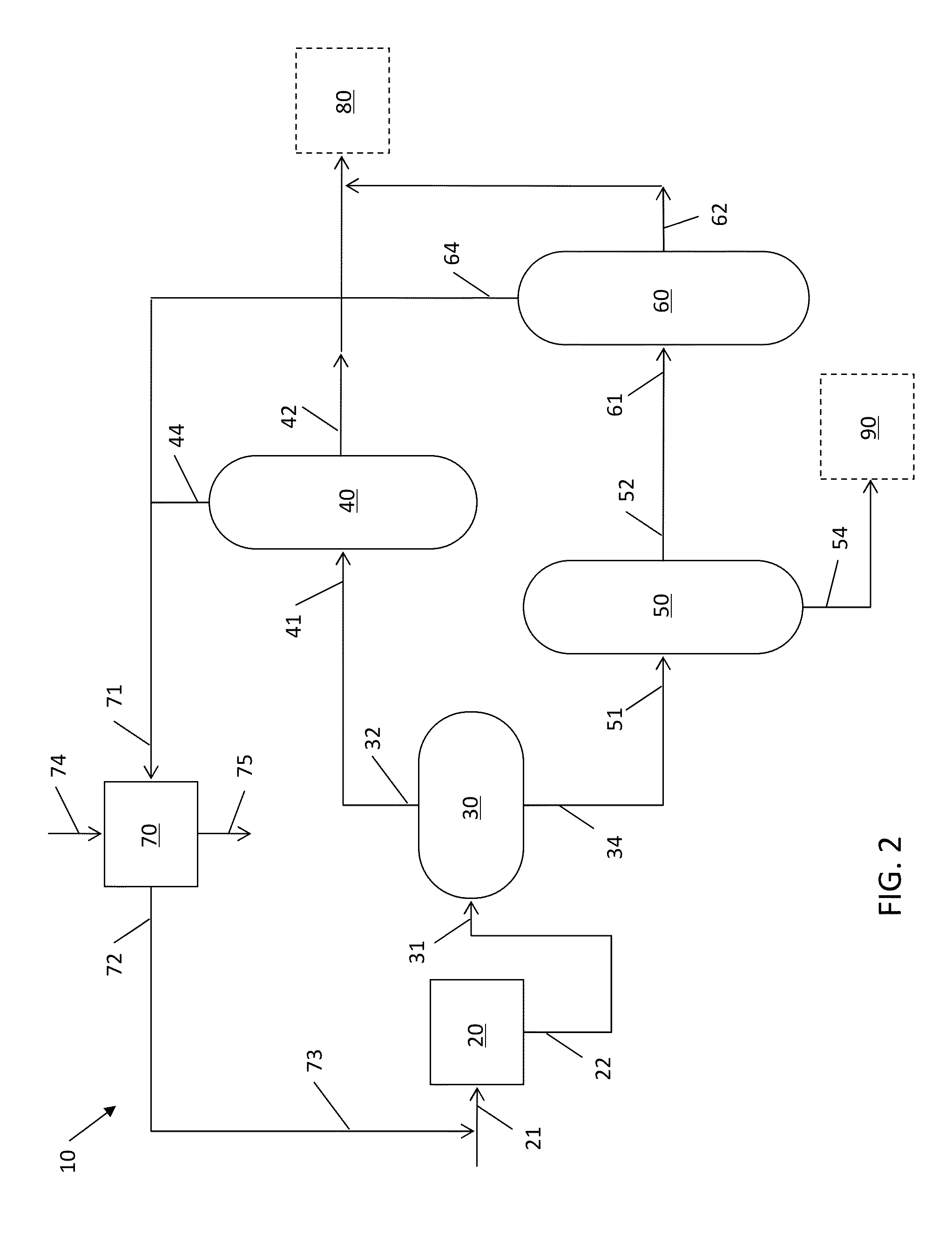Process for stabilization of heavy hydrocarbons
- Summary
- Abstract
- Description
- Claims
- Application Information
AI Technical Summary
Benefits of technology
Problems solved by technology
Method used
Image
Examples
example 1
[0050]A hydrocarbon sample having an initial boiling point of 560° C., the properties of which are given in Table 2, was mixed with hexadecane at a 1:1 ratio by volume and maintained at 100° C. and atmospheric pressure for one hour. The combined product was filtered through a sintered glass filter having a 145 to 175 micron pore size, and 0.1 W % of asphaltenes were recovered.
TABLE 2Sulfur1.3W %Hydrogen10.0W %Nitrogen4,000ppmwConradson Carbon Residue29W %Pentane Asphaltenes6W %Aromatics60W %
example 2
[0051]A hydrocarbon sample having an initial boiling point of 290° C., the properties of which are given in Table 3, was mixed with hexadecane at a 1:1 ratio by volume and maintained at 100° C. and atmospheric pressure for one hour. The combined product was filtered through a sintered glass filter having 145 to 175 micron pore size, and 0.4 W % of asphaltenes were recovered.
TABLE 3Sulfur1.5W %Hydrogen11.2W %Nitrogen2,200ppmwConradson Carbon Residue15W %Pentane Asphaltenes3W %Aromatics48W %
example 3
[0052]A hydrocarbon sample having an initial boiling point of 210° C., the properties of which are given in Table 4, was mixed with hexadecane at a 1:1 ratio by volume and maintained at 100° C. and atmospheric pressure for 1 hour. The combined product was filtered through a sintered glass filter having 145 to 175 micron pore size, and 0.5 W % of asphaltenes were recovered.
TABLE 4Sulfur1.0W %Hydrogen10.7W %Nitrogen2,000ppmwConradson Carbon Residue15W %Pentane Asphaltenes3W %Aromatics44W %
PUM
 Login to View More
Login to View More Abstract
Description
Claims
Application Information
 Login to View More
Login to View More - R&D
- Intellectual Property
- Life Sciences
- Materials
- Tech Scout
- Unparalleled Data Quality
- Higher Quality Content
- 60% Fewer Hallucinations
Browse by: Latest US Patents, China's latest patents, Technical Efficacy Thesaurus, Application Domain, Technology Topic, Popular Technical Reports.
© 2025 PatSnap. All rights reserved.Legal|Privacy policy|Modern Slavery Act Transparency Statement|Sitemap|About US| Contact US: help@patsnap.com


